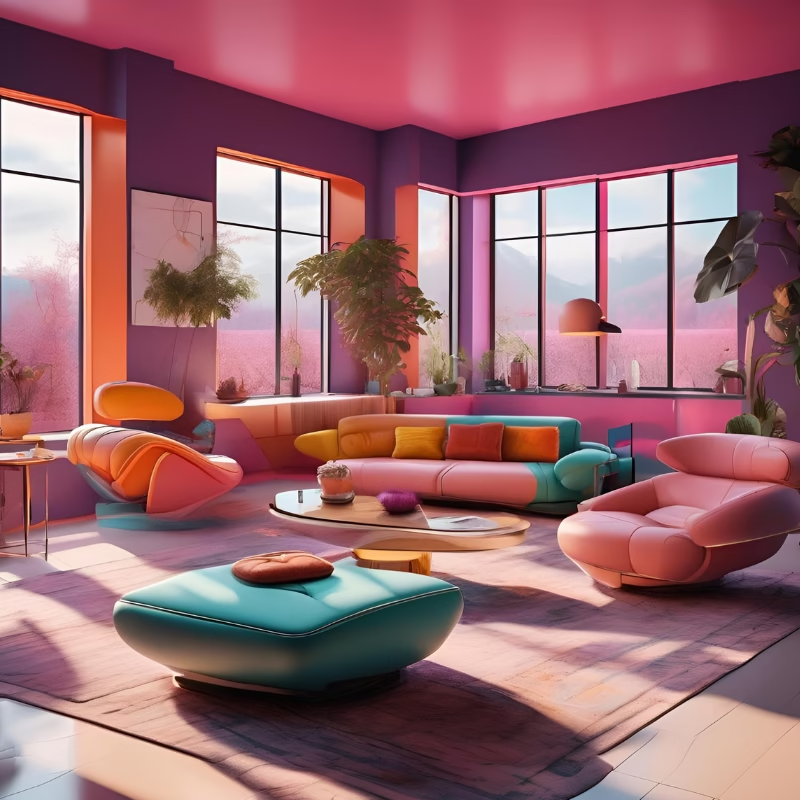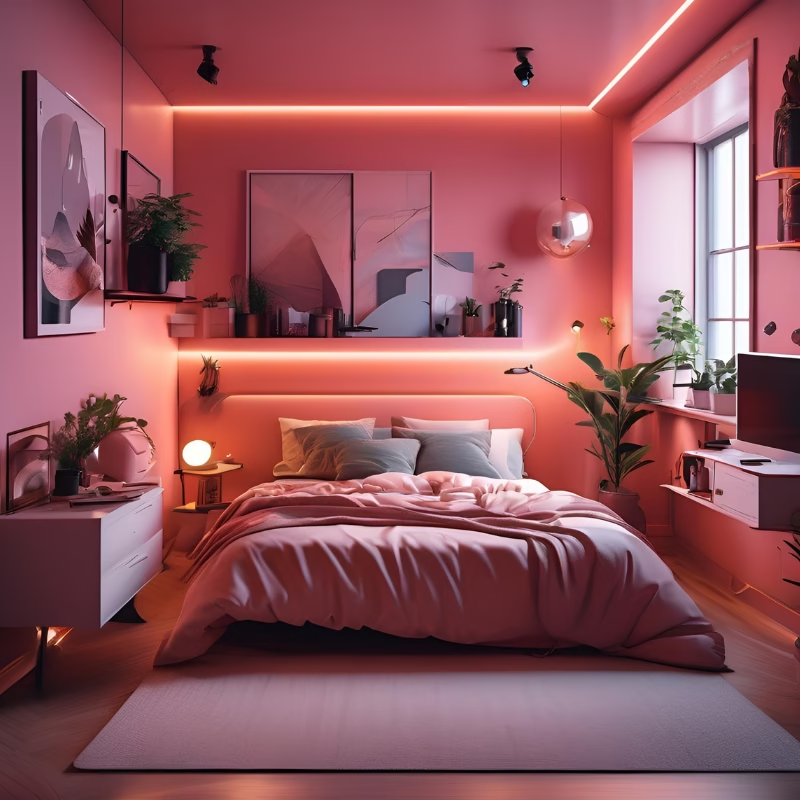Table of Contents
Introduction
Are you ready to create an environmentally friendly refuge out of your house? Sustainable and Eco-Friendly Designs is a concrete method for building better, more efficient buildings, not a buzzword anymore. Whether you live in a house, enjoy interior design, or are committed to green living, this book will enable you to grasp and use sustainable ideas for your next project.
An Original Approach to Sustainable and Eco-Friendly Designs
Welcome to the day of interior design where sustainability and aesthetics coexist! Sustainable and Eco-Friendly Designs ideas can significantly lower our environmental impact and improve quality of living in the modern world when environmental issues are becoming more and more critical. The key ideas of sustainable design, its many advantages, and useful advice to easily include these ideas into your daily life will be broken out in this blog article.
Comprehending Sustainable and Eco-Friendly Designs
Creating environments and goods with sustainable design reduces adverse effects on the surroundings. Sustainable design seeks to promote health, well-being, and sustainability for the next generations by stressing renewable resources, energy-efficient technologies, and ecologically friendly materials.
Learn More about Luxury Interior Design ideas 2024: Elevate Your Elegance
Fundamental Ideas in Sustainable and Eco-Friendly Designs
Energy Productivity
Sustainable design revolves mostly on energy efficiency. Reducing energy use mostly depends on wise architectural decisions including big windows maximizing natural light and passive solar heating. Including modern renewable energy sources such as solar panels and wind generators helps to improve the energy economy even further.
- Smart Architectural Decisions: When you’re talking about really smart architectural choices, well, actually, large windows are a no-brainer. Not only do they flood your house with natural light, but they seriously help to lower your energy bills too, because you just don’t need those lights on all the time. And another fantastic way to really trim your energy footprint is with passive solar heating – that’s basically just using the sun’s energy to warm your place up
- Resources for Renewable Energy: Then there’s the whole realm of renewable energy resources, right? For folks wanting to generate their own sustainable energy at home, solar panels and wind turbines are super practical options. Over time, these technologies, they can seriously cut down your reliance on fossil fuels and really slash those utility costs.
Water Protection
Moreover, stress in sustainable design is the need for water conservation. Low-flow fixtures and rainwater collecting techniques help to lower water use without sacrificing comfort.
- Rainwater Harvesting: One efficient technique to save water is to gather rainwater for use in laundry, toilet flushing, and even irrigation. Simple systems can be included into current buildings or designed into new ones.
- Low-flow Fixtures: Low-flow taps and showerheads will help to greatly reduce water consumption. Modern designs guarantee that low water flow does not translate into low performance.
Environmentally Friendly Materials
Sustainable design depends critically on the choice of non-toxic, renewable materials. Excellent choices to give your area character and environmental value are bamboo, repurposed wood, and recycled metals.
- Resources Sustainable: When we’re talking about sustainable resources, you know, bamboo is just fantastic. It grows so fast and regenerates itself without needing replanting, which makes it super sustainable. And same goes for salvaged wood; not only does it help protect our forests, but it really gives your place a truly unique, special appeal too. It’s got character.
- Finishes Not Toxic: Then there’s the whole thing about non-toxic finishes, right? Low-VOC, or volatile organic compound, paints and finishes, well, they’re so important. They do wonders for improving your indoor air quality, pretty much guaranteeing you a safe and healthy living space.
Reduction of Waste
One can considerably promote sustainable living by planning with less trash. Key tactics are choosing robust materials, planning for lifetime, and including composting and recycling systems.
- Minimizing Excess Material Use: Careful design helps to reduce waste during repair or building. Select pre-fabricated components and modular designs that fit together with little waste.
- Systems of Recycling and Composting: Within your house, arrange specific spaces for composting and recycling. This promotes sensible trash management and helps to lower garbage transported to landfills.
Biophilic Architecture
Biophilic design—that is, including nature into the constructed environment—has been found to enhance mental health. Among the things that may bring the outside right in are indoor plants, green walls, and natural light.
- Incorporate in Your Design: Indoor plants, natural light, and water features. Apart from their spectacular appearance, green walls help to enhance the air quality. Mental well-being has been demonstrated by a connection to nature lowering stress, improving mood, and increasing output. Add natural materials to design a calm and energizing environment.
Advantages of Sustainable and Eco-Friendly Designs
Environmental Impact
So, adopting sustainable and eco-friendly design techniques, you know, it’s a really big deal. It helps you seriously lower your carbon footprint and protect our natural resources, pushing us towards a better planet, really. And by going for energy-efficient appliances and those great renewable energy sources, you’re directly helping to cut down on greenhouse gas emissions. In this whole fight against climate change, every single little action, no matter how small, truly makes a difference. It all adds up.
Saving Natural Resources
Using sustainable materials and conserving water help to guarantee that natural resources will be available for the next generations.
Financial Redundancy
Long-term savings from sustainable design can sometimes be really large. While early expenses could be heavier, over time lowered energy and water expenditures more than offset.
- Reduced Energy and Water Charges: Together with renewable energy sources, energy-efficient appliances and fixtures help to greatly lower utility costs.
- Long-term Cost Advantages: Purchasing robust, premium materials helps to lower the need for regular replacements, so saving money over time.
Health and Well-Being
Eco-friendly designs give residents’ health top priority, therefore improving indoor air quality and benefiting from natural light and green areas.
- Enhanced Interior Air Quality: Good ventilation and non-toxic materials help to guarantee that indoor air remains safe and fresh for breathing.
- Positive Results from Green Areas and Natural Lighting: Natural light and vegetation improve mood and output, so improving the quality of living by means of a healthier surroundings.
Rising Property Value
Built using sustainable methods, properties with better resale values are more sought after on the market.
- Market Demand for Ecological Properties:More consumers search for environmentally friendly, energy-efficient homes as knowledge of environmental problems rises. Sustainable homes’ lower running costs, better living conditions, and attractiveness to environmentally minded purchasers help to explain why they sometimes fetch higher prices.
Guideline for Including Sustainable Design
Start Small
If you know nothing about sustainable design, start with little adjustments. Choose low-VOC paints, energy-efficient light bulbs, and arrange for a recycling system in your house or business.
- Simple Adjustments for Everyday Life: Over time, little actions like cutting water usage and turning off lights when not in use can have a major impact.
- Energy-Effective Goods: To cut your energy use, make investments in energy-efficient appliances and fixtures.
Select Green Products
Search for furniture or décor created from sustainable materials and support companies that give ethical manufacturing top priority.
- Sustainable Furniture and Decor: Select items created from recycled or renewable resources. Search for certificates attesting to products’ environmental friendliness.
- Ethical Production Methods: Give businesses which prioritize fair labor standards top priority and openness of their supply chains support.
Accept Handy Solutions
Developing your own environmentally friendly answers can be sustainable and satisfying. For your garden, make a compost bin, recycle old furniture, or design a rainwater collecting system.
- Recycling and Repurposing: Give ancient things fresh life to inspire creativity. Upcycling gives your house original accents and helps to cut waste.
- Practical Ways to Include Sustainability: Into your daily life are do-it-yourself projects including rainwater collectors or compost bins.
Teach Others and Yourself
Share your knowledge about sustainable practices with coworkers, friends, and family. People’s awareness of the need for environmentally friendly design can help us to have more overall effect.
- Maintaining Knowledge: Stay current with the newest developments in sustainable design including technologies. Local groups as well as internet resources abound.
- Distributing Information to the Community: Organize local clubs or workshops to raise knowledge of the value of sustainable living among others.
Work with Experts
If you are working on a bigger project, think about collaborating with designers or architects that specialize in environmentally friendly methods. Their knowledge will enable you to negotiate materials and methods fit for your environmentally conscious aims.
- Collaborating with Sustainable and eco-friendly designs: Professionals can guarantee your project satisfies sustainability criteria and offer insightful analysis. Using expert advice for environmentally friendly projects will enable you to make wise decisions consistent with your aims for sustainability.
Conclusion
A better, more responsible way of life depends on sustainable and Eco-friendly Designs. Including these ideas into our daily routines and residences will help us greatly lower our environmental effect and design areas that support sustainability and well-being.
Every little action adds something. Your actions help to create a better future, whether it means beginning small-scale projects or more major ones. To maximize sustainable design methods, keep educated, share your expertise, and work with experts.
Combined, we can create a better, more sustainable planet. Let’s promise to make deliberate decisions honoring our earth and advancing sustainability in all spheres of design.
Learn More: Click Here
FAQ’s
Definitions of sustainable and eco-friendly designs
Building, product, or environmental design that is sustainable is one which uses resources wisely and is environmentally beneficial all through their lifetime. This procedure includes choosing methods and products that guarantee long-term durability and health advantages as well as minimize harmful effects on the environment.
In what ways may sustainable and eco-friendly designs help the environment?
sustainable and eco-friendly designs lessens pollution, wastes less, and preserves resources. Sustainable design methods help to reduce carbon footprints and protect natural ecosystems by means of environmentally friendly materials and energy-efficient technologies.
More costly is sustainable and eco-friendly designs?
Although sustainable and eco-friendly designs may have more initial costs, over time the savings on energy, water, and maintenance usually exceed the initial outlay. Sustainable homes can also have less running expenses and more resale value.
Existing experts focused on sustainable and eco-friendly designs?
Indeed, a lot of builders, designers, and architects focus on environmentally friendly methods. Working with these experts will help to guarantee that your projects are carried out to the best standards and follow environmentally friendly ideas.
How might I keep current on trends in sustainable and eco-friendly designs?
Following trade magazines, joining pertinent social media groups, attending seminars, and interacting with local environmental organizations will help one stay current with sustainable and eco-friendly designs. Maintaining current depends mostly on ongoing education and community involvement.

